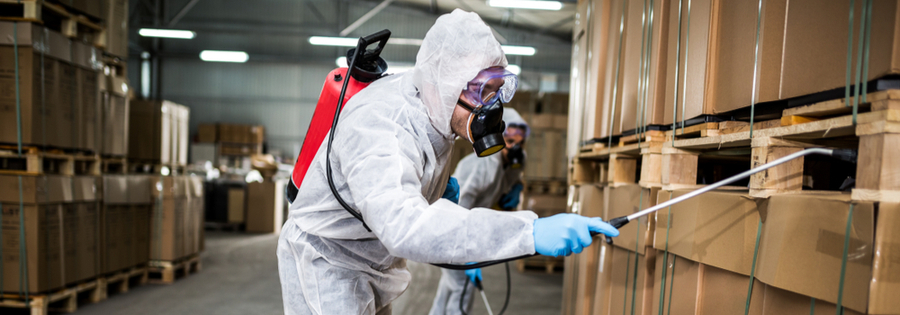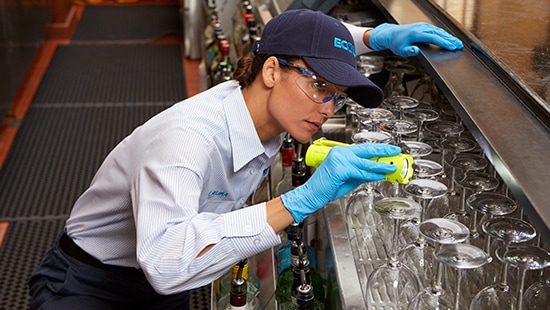Customized Pest Control Solutions Chicago: Tailored Plans for Your Demands
Customized Pest Control Solutions Chicago: Tailored Plans for Your Demands
Blog Article
A Comprehensive Guide to the Various Sorts Of Insect Control Approaches
With the myriad of insect control approaches available, it can be overwhelming to locate the most efficient remedy for a details bug issue. In this detailed guide, we will discover these various kinds of bug control approaches, using insights into their applications and benefits. By the end, you will have a clearer understanding of which technique might be the best fit for your pest control requirements.
Chemical Bug Control Approaches

One common type of chemical insect control is insecticides. Insecticides target particular bugs, such as insects, termites, or ants, and can be used both indoors and outdoors.
An additional type of chemical bug control is rodenticides. These are chemical compounds made to control populations of rodents, such as rats and mice.
Herbicide, also referred to as herbicides, are one more kind of chemical bug control technique. Herbicides are created to uniquely eliminate unwanted plants, called weeds, without causing damage to desirable plants. They are frequently made use of in farming, landscape design, and gardening to regulate the growth of unwanted plants.
While chemical parasite control methods can be highly efficient in removing insects, it is necessary to use them deliberately and adhere to safety and security guidelines. Overuse or misuse of chemical pesticides can have unfavorable effect on human health and wellness and the setting. Therefore, it is critical to use these methods responsibly and think about different parasite control techniques whenever feasible.
Biological Bug Control Approaches
Biological insect control approaches involve making use of living microorganisms or natural compounds to take care of and control pest populaces. Unlike chemical approaches, which typically depend on synthetic chemicals, biological control methods use the all-natural opponents of insects to control their populations. This technique is considered more eco-friendly and sustainable, as it reduces the usage of damaging chemicals and lessens the risk of chemical resistance.
One commonly utilized organic bug control technique is the intro of all-natural killers or bloodsuckers. As an example, ladybugs are presented to control aphids, while specific wasp species are launched to target caterpillars. These predators and bloodsuckers prey on parasites, reducing their numbers and preventing infestations.
Another organic control approach is the usage of virus. Particular bacteria, infections, and fungi can be employed to contaminate and eliminate particular insects. The bacterium Bacillus thuringiensis is typically used to control caterpillars, as it creates toxic substances that are dangerous to these pests.
Biological control approaches can also include making use of pheromones or all-natural substances that interfere with the mating patterns of pests. By conflicting with their reproduction, these approaches assist to lower pest populations with time.
While organic pest control approaches are usually reliable, they might need longer periods to achieve desired results compared to chemical approaches. In addition, cautious consideration has to be offered to the selection and release of natural adversaries to stop unplanned damage to beneficial microorganisms or environments.
Physical Parasite Control Approaches
To properly handle and manage pest populations, different pest control approaches recognized as physical parasite control approaches are used. An additional physical parasite control technique is the installment of fencings or wall surfaces to keep larger insects, such as deer or bunnies, out of gardens or agricultural areas. Physical insect control approaches are an eco friendly choice to chemical pesticides, as they do not depend on the use of harmful chemicals.
Natural Parasite Control Approaches
Natural insect control techniques use a sustainable and eco-friendly technique to managing and getting rid of pests. These techniques focus on using all-natural materials and organic representatives, reducing the requirement for chemical pesticides that can harm the setting and human health and wellness. One of the most usual natural bug control methods is biological control. This entails presenting natural predators or bloodsuckers to victimize or parasitize the pests. Ladybugs are frequently presented to yards to manage aphid populations. One more natural technique is making use of repellents derived from plants. Specific plants, such as marigolds, lavender, and peppermint, produce aromas that ward off insects like mosquitoes, flies, and ants. Additionally, cultural control practices can be utilized to prevent and manage pest infestations. This includes correct hygiene, routine maintenance, and promoting biodiversity in the garden. Rotating plants, getting rid of garden debris, and motivating natural killers can assist stop the accumulation of have a peek at this website bugs. By embracing these natural bug control methods, individuals and areas can properly handle insects while reducing the negative effect on the atmosphere and human health.
Integrated Bug Monitoring (IPM)
Integrated Parasite Administration (IPM) is an extensive and organized approach to pest control that combines various techniques and methods to efficiently take care of bugs while decreasing using chemical pesticides. IPM intends to preserve parasite populations listed below the financial injury level by making use of a combination of cultural, biological, and chemical control methods.
Social control approaches entail changing the atmosphere to make it less beneficial for insects. This can include practices such as crop rotation, appropriate cleanliness, and making use of immune plant varieties. By developing negative problems for bugs, social control approaches can considerably minimize bug populations.

Chemical control techniques are utilized as a last resource in IPM. They include the targeted and sensible use chemicals to take care trap pest of bug populations. Unlike standard insect control approaches, IPM intends to decrease using chemical pesticides by utilizing different approaches.
Integrated Insect Monitoring (IPM) is a proactive approach that concentrates on lasting bug management as opposed to depending only on reactive measures. By combining numerous control methods, IPM offers an extra sustainable and eco pleasant technique to pest control.
Conclusion
In final thought, this short article has supplied Continued a detailed summary of the various sorts of parasite control methods. It went over chemical, biological, physical, and natural pest control techniques, in addition to the incorporated insect management strategy. By recognizing these different techniques, individuals can make enlightened decisions on which pest control approach is most ideal for their specific demands and preferences. Effective parasite control is crucial in keeping a healthy and balanced and pest-free atmosphere.
Report this page